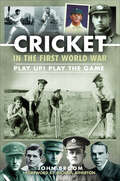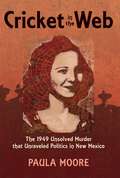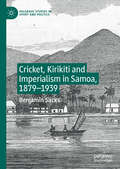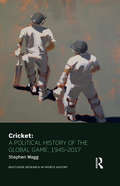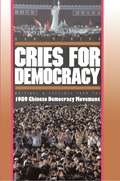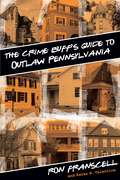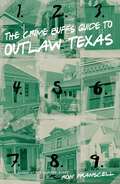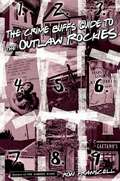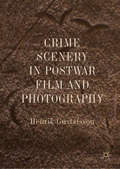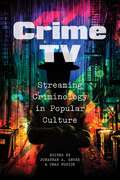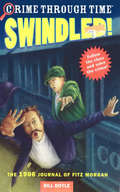- Table View
- List View
Cricket in the First World War: Play up! Play the Game
by John BroomAs Europe descended into war over the summer of 1914, cricket in England continued as it had for the preceding few decades. Counties continued with their championship programme, clubs in the North and Midlands maintained their league and cup rivalries whilst less competitive clubs elsewhere enjoyed friendly matches. However, voices were soon raised in criticism of this ‘business as usual’ approach – most notably that of cricket’s Grand Old Man, W.G. Grace. Names became absent from first-class and club scorecards as players left for military service and by the end of the year it was clear that 1915’s cricket season would be very different. And so it would continue for four summers. Rolls of honour lengthened as did the grim lists of cricket’s dead and maimed. Some club cricket did continue in wartime Britain, often amidst bitter disputes as to its appropriateness. Charity matches were organised to align the game with the national war effort. As the British Empire rallied behind the mother country, so cricket around the world became restricted and players from far and wide joined the sad ranks of sacrifice. Cricket emerged into the post-war world initially unsure of itself but the efforts that had been made to sustain the game’s infrastructure during the conflict ensured that it would experience a second golden age between the wars.
Cricket in the Second World War: The Grim Test
by John BroomAs the civilised world fought for its very survival, Sir Home Gordon, writing in The Cricketer in September 1939, stated that ‘England has now started the grim Test Match with Germany’, the objective of which was to ‘win the Ashes of civilisation’. Despite the interruption of first-class and Test cricket in England, the game continued to be played and watched by hundreds of thousands of people engaged in military and civilian service. In workplaces, cricket clubs, and military establishments, as well as on the famous grounds of the country, players of all abilities kept the sporting flag flying to sustain morale. Matches raised vast sums for war charities whilst in the north and midlands, competitive League cricket continued, with many Test and county players being employed as weekend professionals by the clubs. Further afield the game continued in all the Test-playing nations and in further-flung outposts around the world. Troops stationed in Europe, Africa and the Far East seized on any opportunity to play cricket, often in the most unusual of circumstances. Luxurious sporting clubs in Egypt hosted matches that pitted English service teams against their Commonwealth counterparts. Luminaries such as Wally Hammond and Lindsay Hassett were cheered on by their uniformed countrymen. Inevitably there was a sombre side to cricket’s wartime account. From renowned Test stars such as Hedley Verity to the keen but modest club player, many cricketers paid the ultimate price for Allied victory. The Victory Tests of 1945 were played against a backdrop of relief and sorrow. Nevertheless, cricket would emerge intact into the post-war world in broadly the same format as 1939. The game had sustained its soul and played its part in the sad but necessary victory of the Grim Test.
Cricket in the Second World War: The Grim Test
by John BroomAs the civilised world fought for its very survival, Sir Home Gordon, writing in The Cricketer in September 1939, stated that ‘England has now started the grim Test Match with Germany’, the objective of which was to ‘win the Ashes of civilisation’. Despite the interruption of first-class and Test cricket in England, the game continued to be played and watched by hundreds of thousands of people engaged in military and civilian service. In workplaces, cricket clubs, and military establishments, as well as on the famous grounds of the country, players of all abilities kept the sporting flag flying to sustain morale. Matches raised vast sums for war charities whilst in the north and midlands, competitive League cricket continued, with many Test and county players being employed as weekend professionals by the clubs. Further afield the game continued in all the Test-playing nations and in further-flung outposts around the world. Troops stationed in Europe, Africa and the Far East seized on any opportunity to play cricket, often in the most unusual of circumstances. Luxurious sporting clubs in Egypt hosted matches that pitted English service teams against their Commonwealth counterparts. Luminaries such as Wally Hammond and Lindsay Hassett were cheered on by their uniformed countrymen. Inevitably there was a sombre side to cricket’s wartime account. From renowned Test stars such as Hedley Verity to the keen but modest club player, many cricketers paid the ultimate price for Allied victory. The Victory Tests of 1945 were played against a backdrop of relief and sorrow. Nevertheless, cricket would emerge intact into the post-war world in broadly the same format as 1939. The game had sustained its soul and played its part in the sad but necessary victory of the Grim Test.
Cricket in the Web: The 1949 Unsolved Murder that Unraveled Politics in New Mexico
by Paula MooreOvida "Cricket" Coogler was last seen alive entering a mysterious car driven by an unknown man in downtown Las Cruces, New Mexico, around 3:00 on the morning of March 31, 1949. Seventeen days later, her body was found in a hastily dug grave near Mesquite, New Mexico. The discovery of the eighteen-year-old waitress's body launched a series of court inquiries and trials that would reshape the direction of New Mexico politics, expose political corruption, and spawn generations of rumors that have polarized opinions of what happened to Coogler that windy March morning. Containing elements of mystery, conflict, power, fear, sex, and politics, the Coogler case has outlasted the brief amount of attention that most local unsolved murders receive. In this exhaustively researched study of the murder and its aftermath, Paula Moore provides the first objective account to examine the infamous murder and the events that unfolded in its wake.
Cricket's Greatest Rivalry: A History Of The Ashes In 10 Matches
by Simon Hughes'Hughes takes us on a breathless tour through cricket history, the great players, personalities, matches and events. He never slackens pace or dwells on the dry details of the scoreboard.' - The TimesFrom the William Hill Award-Winning author of A Lot of Hard Yakka comes Cricket's Greatest Rivalry: A History of the Ashes in 10 Matches, a fast-paced, distinctive history of the iconic, 135-year-old cricketing rivalry between England and Australia. The new paperback edition is completely revised and updated to include the tumultuous two series of 2013-2014, which saw more more twists and turns in this enthralling contest. No other sport has a fixture like the Ashes. From the early 1880s the rivalry between these two great sporting nations has captured the public imagination and made sporting legends of its stars. Commentator, analyst and award-winning cricket historian Simon Hughes tells the story of the ten seminal series that have become the stuff of sporting folklore. Cricket's Greatest Rivalry places you right at the heart of the action of each pivotal match, explaining the social context of the time, the atmosphere of the crowd and the background and temperaments of the players that battled in both baggy green and blue caps.Simon starts his story at the very birth of the Ashes and tells the tale of the band of Australians that took on the best gentleman and players in the Empire's HQ and beat them on their home turf. That momentous occasion set the tone for some epic contests including:The thrilling 1902 Test at Old Trafford, which was one by a mere three runs.The incredible innings of Hobbs and Sutcliffe in front of a tense and packed Oval in 1926.The legendary 'bodyline' series of Jardine, Larwood, Bradman et al in 1933.The incredible run chase in 1948 that also saw Bradman's last test.England's reprise in the fifth test of 1953 when Lock, Trueman, Bailey and Hutton steered the hosts to a whirlwind victory.The fearsome pace attack from the likes of Lillie and Thompson that transformed the contest in the first Test of 1974 and shaped the Ashes as a tournament for decades to come.Botham's Ashes in 1981 that restored pride in a sports-mad nation.The match up at old Trafford where the magic of one Shane Warne sent shockwaves through the game.And finally the breaking of the Aussie stranglehold in 2005, when Flintoff, Pietersen and Vaughan did the seemingly impossible and re-established the greatest of rivalries.The book also includes complete statistics and records of all the Ashes fixtures and results and much, much more!
Cricket's Greatest Rivalry: A History of The Ashes in 12 Matches
by Simon HughesCompletely revised and updated featuring two brand new chapters, in preparation for the 2019 Ashes seriesFrom the William Hill Award-Winning Author of A Lot of Hard Yakka comes Cricket's Greatest Rivalry: A History of the Ashes in 12 Matches by Simon Hughes.A fast-paced, distinctive history of the iconic, 137-year-old cricketing rivalry between England and Australia published in the year of back-to-back Ashes contests.No other sport has a fixture like the Ashes. From the early 1880s the rivalry between these two great sporting nations has captured the public imagination and made sporting legends of its stars. Commentator, analyst and award-winning cricket historian Simon Hughes tells the story of the 12 seminal series that have become the stuff of sporting folklore. Cricket's Greatest Rivalry places you right at the heart of the action of each pivotal match, explaining the social context of the time, the atmosphere of the crowd and the background and temperaments of the players that battled in both baggy green and blue caps.The book also includes complete statistics and records of all the Ashes fixtures and results and much more!
Cricket's Greatest Rivalry: Completely revised and updated for 2019
by Simon HughesCompletely revised and updated featuring two brand new chapters, in preparation for the 2019 Ashes seriesFrom the William Hill Award-Winning Author of A Lot of Hard Yakka comes Cricket's Greatest Rivalry: A History of the Ashes in 12 Matches by Simon Hughes.A fast-paced, distinctive history of the iconic, 137-year-old cricketing rivalry between England and Australia published in the year of back-to-back Ashes contests.No other sport has a fixture like the Ashes. From the early 1880s the rivalry between these two great sporting nations has captured the public imagination and made sporting legends of its stars. Commentator, analyst and award-winning cricket historian Simon Hughes tells the story of the 12 seminal series that have become the stuff of sporting folklore. Cricket's Greatest Rivalry places you right at the heart of the action of each pivotal match, explaining the social context of the time, the atmosphere of the crowd and the background and temperaments of the players that battled in both baggy green and blue caps.The book also includes complete statistics and records of all the Ashes fixtures and results and much more!(p) 2019 Octopus Publishing Group
Cricket, Kirikiti and Imperialism in Samoa, 1879–1939 (Palgrave Studies in Sport and Politics)
by Benjamin SacksThis book considers how Samoans embraced and reshaped the English game of cricket, recasting it as a distinctively Samoan pastime, kirikiti. Starting with cricket’s introduction to the islands in 1879, it uses both cricket and kirikiti to trace six decades of contest between and within the categories of ‘colonisers’ and ‘colonised.’ How and why did Samoans adapt and appropriate the imperial game? How did officials, missionaries, colonists, soldiers and those with mixed foreign and Samoan heritage understand and respond to the real and symbolic challenges kirikiti presented? And how did Samoans use both games to navigate foreign colonialism(s)? By investigating these questions, Benjamin Sacks suggests alternative frameworks for conceptualising sporting transfer and adoption, and advances understandings of how power, politics and identity were manifested through sport, in Samoa and across the globe.
Cricket: 1945 to 2012 (Routledge Research in Sports History)
by Stephen WaggCricket is an enduring paradox. On the one hand, it symbolises much that is outmoded: imperialism; a leisured elite; a rural, aristocratic Englishness. On the other, it endures as a global game and does so by skilful adaptation, trading partly on its mythic past and partly on its capacity to repackage itself. This ambitious new history recounts the politics of cricket around the world since the Second World War, examining key cultural and political themes, including decolonisation, racism, gender, globalisation, corruption and commercialisation. Part One looks at the transformation of cricket cultures in the ten territories of the former British Empire in the years immediately after 1945, a time when decolonisation and the search for national identity touched every cricket playing region in the world. Part Two focuses on globalisation and the game’s evolution as an international sport, analysing: social change and the Ashes; the campaigns for new cricket formats; the development of the women’s game; the new breed of coach; the limits to the game’s global expansion; and the rise of India as the world’s leading cricket power. Cricket: A Political History of the Global Game, 1945-2017 is fascinating reading for anybody interested in the contemporary history of sport.
Cries For Democracy: Writings and Speeches from the Chinese Democracy Movement
by Minzhu Han"Han Minzhu" and her assistant editor, "Hua Sheng," both writing under pseudonyms to protect their identities, present a rich collection of translations of original writings and speeches from the 1989 Chinese Democracy Movement--flyers, "big-character" posters, "small-character" posters, handbills, poems, articles from nonofficial newspapers and journals, government statements, and transcriptions of tapes. Linked by a commentary setting the documents in the context of the movement's history and of Chinese social and political life, these expressions--indeed, cries--of the participants in the passionate demonstrations in Beijing and other Chinese cities powerfully convey the atmosphere of this extraordinary protest. In the face of the ensuing campaign of intimidation and repression in China, this book enables Western readers to see through the eyes of Chinese students, intellectuals, workers, and other citizens the realities behind the reports and visual images that flooded the media during the spring of 1989. The editors believe that the underlying motivations, emotions, and aspirations of the prodemocracy demonstrators can best be communicated to those outside China by translations that aim as much as possible to capture the original words, tones, and rhythms of the Chinese people. This book is a unique collection of political and personal documents, and it is also a dramatic presentation of the movement. The lucid commentary, the arrangement of selections in approximate chronological order, and the use of photographs combine to create a vivid and flowing narrative. Beginning with the student discontent and restlessness that pervaded Chinese campuses in the winter of 1989, and continuing through to the violent suppression of the Democracy Movement in June with the bloody army takeover of Tiananmen Square and sweeping arrests of activists, the story shows how moderate demands on the part of students grew into a mass antigovernment protest and resistance to martial law in Beijing. Highlighting the demands and goals of the protesters and the attitude of the students toward the Chinese Communist Party, the work movingly evokes the determination, idealism, courage, and flashes of humor that were the essence of this unforgettable spring.
Cries from the Cross: A Journey into the Heart of Jesus
by Erwin W. LutzerErwin Lutzer gently leads readers on a journey into the heart of Christ to help them grasp what Christ Himself wants us to know. Jesus was not silent on the cross. When readers turn their attention to His cries they will be utterly changed.
Cries from the Lost Island
by Kathleen O'Neal GearThis standalone fantasy brings an ancient Egyptian mystery to life against a modern background, in a tale expertly crafted by a seasoned anthropologistSet against the glory and tragedy of ancient Roman Egypt, this novel brings to bring to life the greatest love story of all time.Sixteen-year-old Hal Stevens is a budding historical scholar from a small town in Colorado. A virtual outcast at high school, he has only two friends: Roberto the Biker Witch and Cleo Mallawi. Cleo claims to be the reincarnation of Queen Cleopatra. She also believes she's being stalked by an ancient Egyptian demon, Ammut, the Devourer of the Dead. But when Hal and Roberto find Cleo murdered in the forest near her home, it appears she may have been telling the truth. Her last request sends them journeying to Egypt with famed archaeologist Dr. James Moriarity, where it quickly becomes clear that Cleo has set them on the search of a lifetime: the search for the lost graves of Marc Antony and Cleopatra.But they are not alone in their search. Cleo's murderers are watching their every move. And not all of them are human...
Crime & Community in Ciceronian Rome
by Andrew M. RiggsbyIn the late Roman Republic, acts of wrongdoing against individuals were prosecuted in private courts, while the iudicia publica (literally "public courts") tried cases that involved harm to the community as a whole. In this book, Andrew M. Riggsby thoroughly investigates the types of cases heard by the public courts to offer a provocative new understanding of what has been described as "crime" in the Roman Republic and to illuminate the inherently political nature of the Roman public courts. Through the lens of Cicero's forensic oratory, Riggsby examines the four major public offenses: ambitus (bribery of the electorate), de sicariis et veneficiis (murder), vis (riot), and repetundae (extortion by provincial administrators). He persuasively argues that each of these offenses involves a violation of the proper relations between the state and the people, as interpreted by orators and juries. He concludes that in the late Roman Republic the only crimes were political crimes.
Crime And Punishment In England: An Introductory History
by John Briggs David Vincent Christopher Harrison Mr John Briggs Angus McInnesThis survey of crime in ENgland from the medieval period to the present day synthesizes case-study and local-level material and standardizes the debates and issues for the student reader.
Crime Buff's Guide to Outlaw Pennsylvania (Crime Buff's Guides)
by Ron Franscell Karen ValentineThe Crime Buff's Guide to Outlaw Pennsylvania is the ultimate guidebook to the crime, injustice, and seedy history of the Keystone State. With photographs, maps, directions, and sites to visit, this collection of outlaw tales serves as both a travel guide and an entertaining and informational read. It is a one-of-a-kind exploration into well-known and more obsure sites in Pennsylvania that retain memories of bandits and their scandalous deeds. The Crime Buff series offers indispensable guidebooks for criminal-history enthusiasts and travelers. Each site description includes a brief summary of the spot&’s significance, historical context, maps, directions, and photos. Appealing to both residents and visitors, the books reveal the exploits of famous and less famous outlaws in an irresistable and informational manner. Readers will be shocked, unsettled, and captivated by the true stories and secrets illuminated in the Outlaw collection.
Crime Buff's Guide to Outlaw Southwest (Crime Buff's Guide)
by Ron FranscellA rollicking ride through the true crime history of the American Southwest from the USA Today–bestselling author of The Darkest Night. The line between history and mythology is razor thin—and the American Southwest often erases the line altogether. We might never disentangle crime-fact from fiction, but this book will transport you to Billy the Kid&’s real-life stomping grounds, legendary Tombstone, the childhood home of one of the worst al Qaeda terrorists, and the scenes of dozens of crimes throughout Arizona and New Mexico&’s history. Dozens of fascinating stories in Outlaw Southwest are told in the same fast-paced, enthralling voice that&’s made Ron Franscell one of America&’s most beloved crime writers…and the Crime Buff&’s Guides a three-time winner of the TrueCrimeZine.com Book of the Year! Includes GPS COORDINATES, PHOTOS AND MORE!&“Well researched … Armchair detectives will enjoy the tales, but the book&’s purpose is to take the reader to the scene of the crime.&”—Albuquerque Journal &“The ultimate guilty pleasure book.&”—San Antonio (TX)Express-News &“Perfect for summer vacations because you can put it down and pick it up without losing your place (but you won&’t want to put it down). For those of who week true-crime stories, it&’s a fascinating look at the dark side.&”—Tucson (AZ) Sentinel
Crime Buff's Guide to Outlaw Texas (Crime Buff's Guides)
by Ron FranscellA fascinating journey through the Lone Star State&’s unruly past—with maps, photos, and moreTexas rightfully claims a celebrated place in the &“wildest&” West of both myth and reality—which makes it truly stranger than fiction that The Crime Buff&’s Guide to Outlaw Texas is the first-ever travel guide to the many sites related to the Lone Star State&’s renowned rambunctious past, complete with GPS coordinates that put you at the scene of the action. From outlaws like Sam Bass and John Wesley Hardin to Bonnie & Clyde and Houston&’s notorious Candy Man killer, Texas has dozens of places where true-crime buffs can actually stand close to history. For many readers, the attraction to these sites—some well-known, some obscured by time—is irresistible.Written with the same fast-paced, gripping style that marked the author&’s widely praised earlier work, The Crime Buff&’s Guide to Outlaw Texasis an indispensable resource for both criminal-history enthusiasts and travelers. Each site description includes a concise summary of the location&’s significance, historical context, maps, directions, and photos. Praise for a previous book by the same author, The Darkest Night &“Heartbreaking . . . Not unlike Truman Capote&’s In Cold Blood.&” —Chicago Sun-Times&“This uncommon story has every chilling component of human terror, drama, and suspense that readers of true crime look for.&” —Vincent Bugliosi, #1 New York Times bestselling author of Helter Skelter&“A very, very, good book . . . written by a very, very, good writer.&” —Ann Rule, #1 New York Times bestselling author of Stranger Beside Me
Crime Buff's Guide to Outlaw Washington, DC (Crime Buff's Guides)
by Ron FranscellWashington D.C. isn't known as the "District of Crime" or "Murder Capital of America" for nothing. Though the capital city's motto is "justice for all," D.C. has a darker side, including an extensive history of crimes and misdemeanors, some political and some not. The Crime Buff's Guide to Outlaw Washington D.C. is the ultimate guidebook to the criminal and seedy history of the nation's capital -- plus Maryland, Northern Virginia and (ironically) Arlington National Cemetery. It also contains an entire chapter pinpointing key and little-known sites in the Lincoln Assassination. With photographs, maps, directions, and precise GPS coordinates, this collection of outlaw tales serves as both a travel guide and an entertaining and enlightening read. It is a one-of-a-kind exploration into well-known and more obscure sites in D.C. that retain memories of bandits, corpse-snatchers, murderers, snipers, bootleggers, assassins, rogue scientists, spies, mobsters and corrupt politicians -- even a legendary serial killer dressed in a bunny suit -- and their scandalous deeds.
Crime Buff's Guide to the Outlaw Rockies (Crime Buff's Guides)
by Ron FranscellA fascinating journey through the Rockies’ unruly past—with maps, photos, and more.
Crime Fiction and the Holocaust (Crime Files)
by Eric SandbergThis book explores a wide range of twentieth and twenty-first century international fiction that engages with the Holocaust and its historical legacy. It examines the use of tropes of crime and detection in the representation of historical atrocity in both explicit crime fiction and in literary fiction that relies on some of crime fiction&’s signature techniques. Crime Fiction and the Holocaust asks why patterns of detection have become a favoured method of fictional engagement with the Holocaust, considers the ethical and textual problematics of fictional encounters with real-world suffering, and delineates crime fiction&’s formal and thematic contributions to the broader project of Holocaust fiction.
Crime Opportunity Theories: Routine Activity, Rational Choice and their Variants (The\library Of Essays In Theoretical Criminology Ser.)
by Mangai NatarajanOpportunity theories of crime seek to explain the occurrence of crime rather than simply the existence of criminal dispositions. They emphasize the fundamental element in the criminal act of opportunity: how this arises, how it is perceived, evaluated and acted on by those with criminal dispositions. This volume brings together influential research articles on opportunity theories of crime by leading theorists such as Cohen and Felson on routine activity theory and Clarke and Cornish on the bounded rational choice perspective. The articles also include more recent theoretical developments and studies of situational crime prevention of specific twenty-first century crimes. These articles attest to the sheer volume as well to as the richness and the variety of work designed to reduce crime that has forever changed the face of criminology and criminal justice.
Crime Scenery in Postwar Film and Photography
by Henrik GustafssonThis book offers a rare and innovative consideration of an enduring tendency in postwar art to explore places devoid of human agents in the wake of violent encounters. To see the scenery together with the crime elicits a double interrogation, not merely of a physical site but also of its formation as an aesthetic artefact, and ultimately of our own acts of looking and imagining. Closely engaging with a vast array of works made by artists, filmmakers and photographers, each who has forged a distinct vantage point on the aftermath of crime and conflict, the study selectively maps the afterlife of landscape in search of the political and ethical agency of the image. By way of a thoroughly interdisciplinary approach, Crime Scenery in Postwar Film and Photography brings landscape studies into close dialogue with contemporary theory by paying sustained attention to how the gesture of retracing past events facilitates new configurations of the present and future.
Crime TV: Streaming Criminology in Popular Culture
by Ben Jones Eduardo MendietaFrom Game of Thrones to Breaking Bad, the key theories and concepts in criminal justice are explained through the lens of televisionIn Crime TV, Jonathan A. Grubb and Chad Posick bring together an eminent group of scholars to show us the ways in which crime—and the broader criminal justice system—are depicted on television. From Breaking Bad and Westworld to Mr. Robot and Homeland, this volume highlights how popular culture frames our understanding of crime, criminological theory, and the nature of justice through modern entertainment. Featuring leading criminologists, Crime TV makes the key concepts and analytical tools of criminology as engaging as possible for students and interested readers. Contributors tackle an array of exciting topics and shows, taking a fresh look at feminist criminology on The Handmaid’s Tale, psychopathy on The Fall, the importance of social bonds on 13 Reasons Why, radical social change on The Walking Dead, and the politics of punishment on Game of Thrones. Crime TV offers a fresh and exciting approach to understanding the essential concepts in criminology and criminal justice and how theories of crime circulate in popular culture.
Crime Through Time #1: Swindled! (Crime Through Time #1)
by Bill DoyleFitz is traveling from New York for San Francisco aboard a Continental Express train. People start getting sick from cyanide poisoning, so Fitz and Justine "the Judge" Pinkerton begin to unravel a plot involving a ring of counterfeiters.
Crime Through Time #2: Nabbed! (Crime Through Time #2)
by Bill DoyleG. Codd Fitzmorgan arrives at a party. But it's more than a celebration as our detective unravels a mystery involving a seance, a reckless aviator, and sale of liquor banned under Prohibition.
